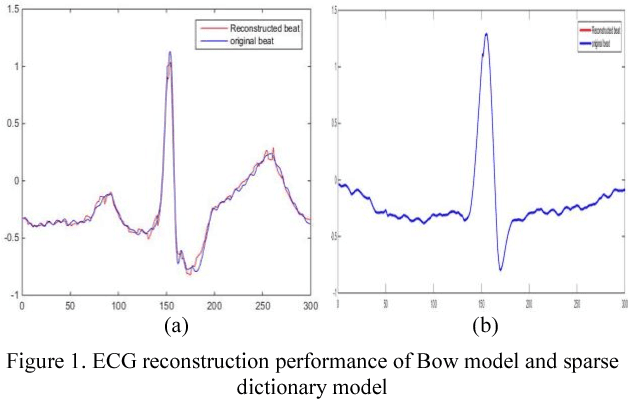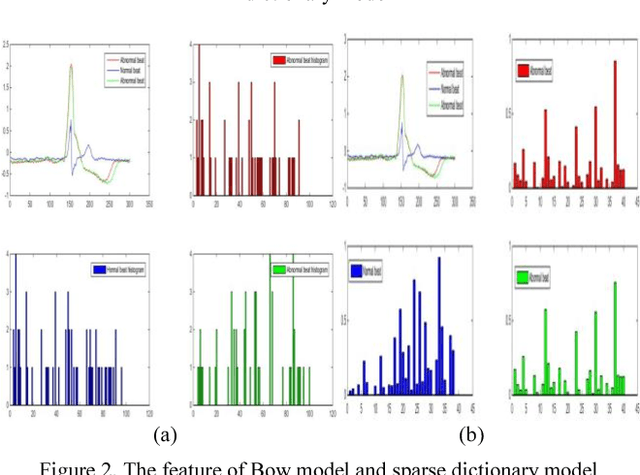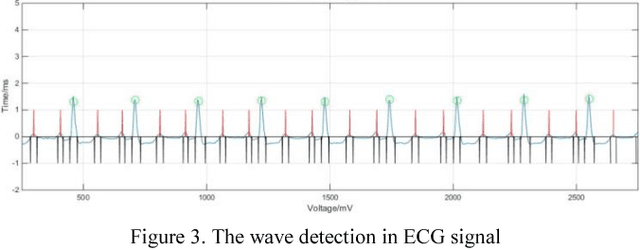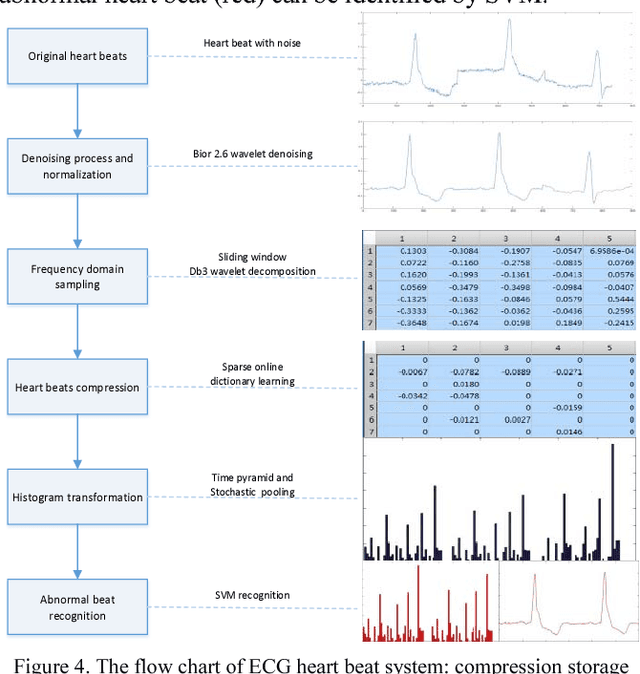Yujuan Si
ECG Beats Fast Classification Base on Sparse Dictionaries
Sep 08, 2020



Abstract:Feature extraction plays an important role in Electrocardiogram (ECG) Beats classification system. Compared to other popular methods, VQ method performs well in feature extraction from ECG with advantages of dimensionality reduction. In VQ method, a set of dictionaries corresponding to segments of ECG beats is trained, and VQ codes are used to represent each heartbeat. However, in practice, VQ codes optimized by k-means or k-means++ exist large quantization errors, which results in VQ codes for two heartbeats of the same type being very different. So the essential differences between different types of heartbeats cannot be representative well. On the other hand, VQ uses too much data during codebook construction, which limits the speed of dictionary learning. In this paper, we propose a new method to improve the speed and accuracy of VQ method. To reduce the computation of codebook construction, a set of sparse dictionaries corresponding to wave segments of ECG beats is constructed. After initialized, sparse dictionaries are updated efficiently by Feature-sign and Lagrange dual algorithm. Based on those dictionaries, a set of codes can be computed to represent original ECG beats.Experimental results show that features extracted from ECG by our method are more efficient and separable. The accuracy of our method is higher than other methods with less time consumption of feature extraction
ECG beats classification via online sparse dictionary and time pyramid matching
Aug 15, 2020



Abstract:Recently, the Bag-Of-Word (BOW) algorithm provides efficient features and promotes the accuracy of the ECG classification system. However, BOW algorithm has two shortcomings: (1). it has large quantization errors and poor reconstruction performance; (2). it loses heart beat's time information, and may provide confusing features for different kinds of heart beats. Furthermore, ECG classification system can be used for long time monitoring and analysis of cardiovascular patients, while a huge amount of data will be produced, so we urgently need an efficient compression algorithm. In view of the above problems, we use the wavelet feature to construct the sparse dictionary, which lower the quantization error to a minimum. In order to reduce the complexity of our algorithm and adapt to large-scale heart beats operation, we combine the Online Dictionary Learning with Feature-sign algorithm to update the dictionary and coefficients. Coefficients matrix is used to represent ECG beats, which greatly reduces the memory consumption, and solve the problem of quantitative error simultaneously. Finally, we construct the pyramid to match coefficients of each ECG beat. Thus, we obtain the features that contain the beat time information by time stochastic pooling. It is efficient to solve the problem of losing time information. The experimental results show that: on the one hand, the proposed algorithm has advantages of high reconstruction performance for BOW, this storage method is high fidelity and low memory consumption; on the other hand, our algorithm yields highest accuracy in ECG beats classification; so this method is more suitable for large-scale heart beats data storage and classification.
* 7 pages,5 figure
 Add to Chrome
Add to Chrome Add to Firefox
Add to Firefox Add to Edge
Add to Edge